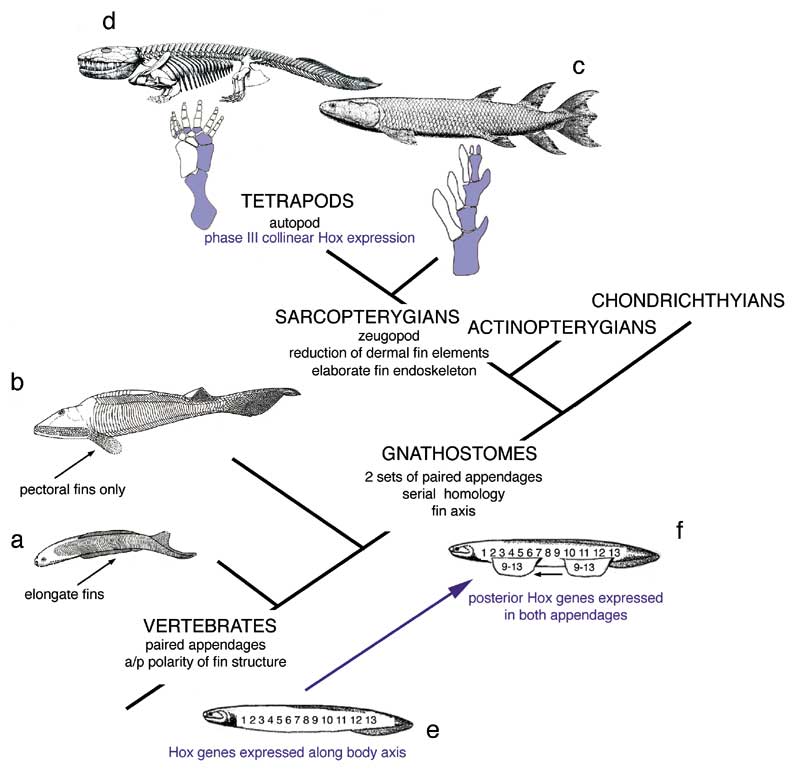
a figure from the essay
Fossils, Genes and the Evolution of Animal Limbs
by Neil Shubin, Clif Tabin and Sean Carroll
Figure 1 (from page 102 of Shaking the Tree: Readings from Nature in the History of Life edited by Henry Gee)
Major innovations of vertebrate paired appendages. Basal chordates, such as Amphioxus (not shown), do not possess appendages homologous to those of vertebrates. Unpaired, median fins are the earliest known vertebrate appendages.2 Paired appendages are first encountered in Ordovician and Silurian jawless fish as elongate fins that extend laterally along the body wall (for example, Jamoytius; a) or as paired pectoral fins (osteostracans; b). Other basal vertebrates (not shown) do not possess any paired appendages. Multiple sets of paired appendages are a derived characteristic of jawed fish (gnathostomes). In many gnathostomes, pectoral and pelvic fins have often evolved in parallel. This pattern of concerted evolution suggests that pectoral and pelvic appendages shared similar regulatory genes in early stages of gnathostome evolution. A fin axis (shaded) is seen in the fins of many gnathostomes, and it is a primitive characteristic for sarcopterygian fish (for example, Eusthenopteron; c) and tetrapods (for example, Ichthyostega; d). Sarcopterygian fins are derived in having a zeugopod and an elaborate endoskeletal fin skeleton. Digits develop within the distal portion of this extensive endoskeleton. The establishment of serially homologous appendages is proposed to result from gene co-option during the evolution of Paleozoic vertebrates. HoxD genes were probably not involved in the origins of body wall outgrowths in basal vertebrates because unpaired fins do not express these genes.9 These Hox genes were initially involved in specifying regional identities along the primary body axis, particularly in caudal segments (e). One key step in the origin of jawed fish was the co-option of similar nested patterns of expression of HoxD genes in the development of both sets of paired appendages (f). This co-option may have happened in both appendages simultaneously, or Hox expression could have been initially present in a pelvic appendage and been co-opted in the development of an existing pectoral outgrowth.8 The reconstructions in a and b are modified from those in ref. 106, that in c from ref. 107, and that in d from ref. 108. The hindlimb of Ichthyostega (d) is modified from ref. 5.
Back to the list of color illustrations.
About the book: Shaking the Tree: Readings from Nature in the History of Life edited by Henry Gee, published by the University of Chicago Press.